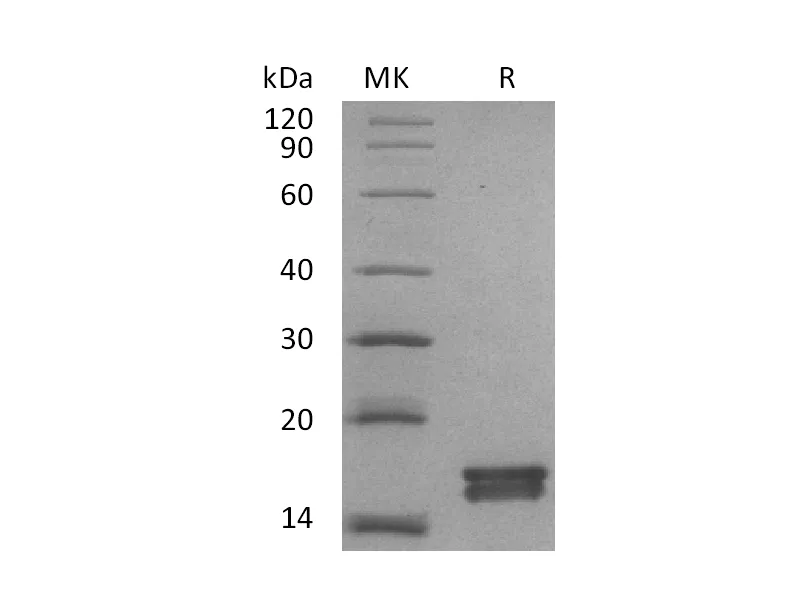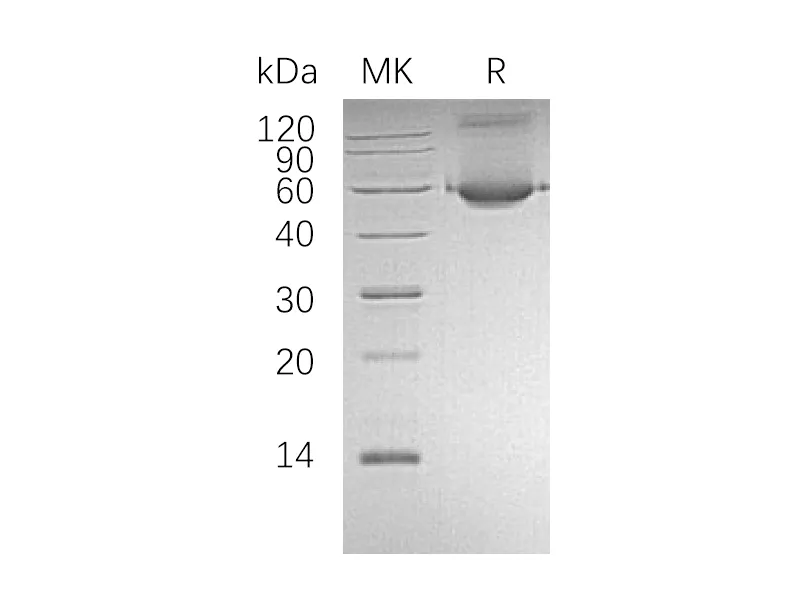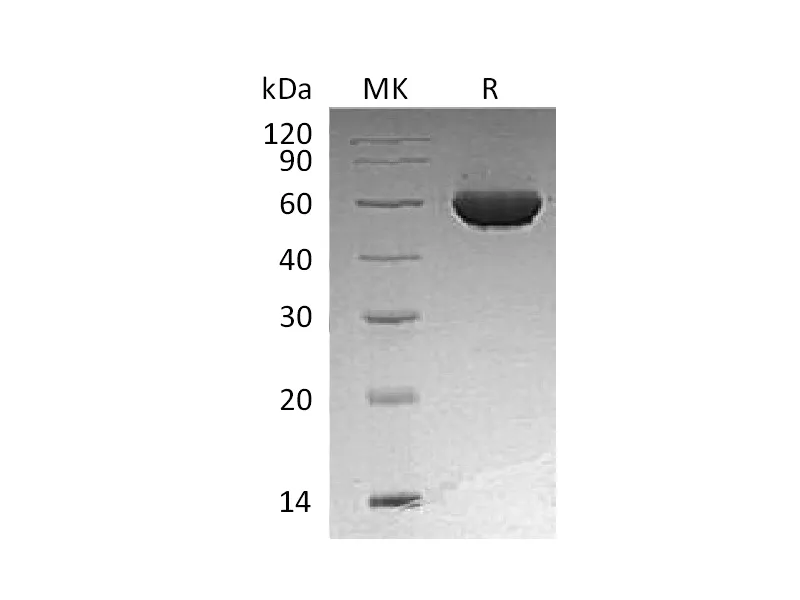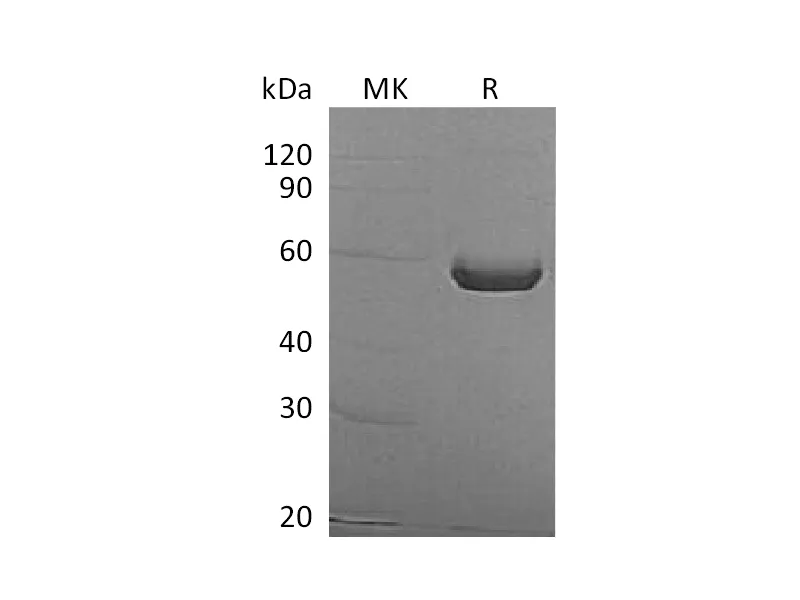Alternative Names
Carcinoembryonic antigen-related cell adhesion molecule 21; CEACAM21
Background
Carcinoembryonic antigen-related cell adhesion molecule 21 is a protein that in humans is encoded by the CEACAM21 gene. It belongs to the immunoglobulin superfamily. CEA family.containing 1 Ig-like C2-type (immunoglobulin-like) domain.It was found to be a cell-cell adhesion molecule detected on leukocytes, epithelia, and endothelia. The encoded protein mediates cell adhesion via homophilic as well as heterophilic binding to other proteins of the subgroup. Multiple cellular activities have been attributed to the encoded protein, including roles in the differentiation and arrangement of tissue three-dimensional structure, angiogenesis, apoptosis, tumor suppression, metastasis, and the modulation of innate and adaptive immune responses.
Note
For Research Use Only , Not for Diagnostic Use.




